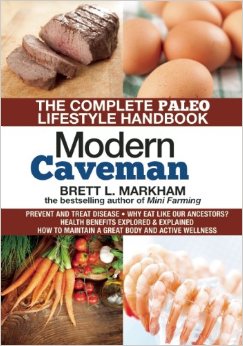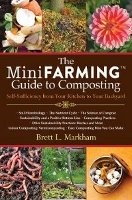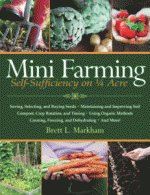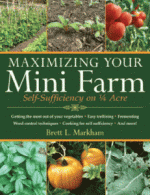Commercial agriculture requires about 30,000 square feet to provide for the needs of a person. When I come along and claim you can meet 80% of a person’s needs in just 1,400 square feet, I hear two reactions. The first is of course incredulity. I can understand that. After all, why should my methods be any better than a multibillion dollar global conglomerate can devise?
I recently had the unfortunate experience of trying to deal with a couple of multibillion dollar corporations in an outside-the-box sort of way. FINALLY, and I really hate doing this, I got results by going to: the press, their customers directly and (and I really hated doing this) a government agent. Between all three for about a week, I finally got results. They figured out how to actually get a human being to alter 14 characters in a database to help their own customers. I’m not even one of their customers.
Just Friday I was doing what is called a “hot cut” on my day job. A hot cut is a live cut-over of, in this case, a mondo huge Internet feed that costs about $14,000/month. This cut-over involved coordinating the resources of two gargantuan companies. The cut-over had been planned since November of 2012. Guess what? It failed and we had to revert.
Don’t let anyone tell you that multibillion dollar global conglomerates are more “efficient.” They simply manage to bribe (legally or illegally) legislators to pass regulations that pose a barrier to entry for competition. These organizations are not nimble at all. They can’t respond. They can’t even get out of their own way. They have the compassion of the IRS, the organization of the Keystone Cops and the agility of an elephant in glass slippers and a tutu.
It’s not that my methods are particular ingenious that makes them more space efficient. There’s nothing magical going on. Rather, it is that my methods don’t require an implementation compatible with government paperwork, a staff of accountants and lawyers and mechanisms that deal with human beings as fungible commodities. Rather, my methods rely simply on you as an individual. And as a person, you are infinitely more capable of getting things done than some global conglomerate.
Once people figure out that my methods actually DO work, they get very enthusiastic and I’m pleased to say that thousands and thousands of people have indeed started their own MiniFarms!
Pretty soon comes the next reaction. You see, compared to 30,000 square feet, a mere 1,400 square feet doesn’t seem like a lot of space. So they run outside with a digging fork and spade to start double digging. That’s when they discover that 1,400 square feet is actually a LOT OF SPACE. And it is a LOT of work.
One of my recommendations for people is to start small — with just a handful of beds — and then add a few every year until they have enough. The reason is because in general I recommend double-digging, and double digging is serious work. Double-digging a single 4’x8′ bed takes a couple of hours of strenuous labor for someone in shape, and about four hours if you are usually sedentary. For most people, 2-3 beds is all you can do in a day.
There are situations where I encourage people to use sheet composting instead of double digging. That avoids a lot of the work, but it is still time consuming and it requires a lot of advanced planning because you make the beds several months before they are needed.
So yes, you can grow a lot in a little space, but start modestly and grow it a bit every year. Otherwise, 1,400 square feet will be too daunting to be done all at once.
Filed under: Uncategorized








